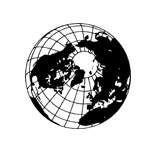Puutiaisten (Ixodes ricinus ja Ixodes persulcatus) levinneisyyteen ja runsauteen vaikuttavat tekijät Suomessa
Keywords:
activity, abundance, climate change, environmental factors, ticksAbstract
Hard ticks (Acari: Ixodidae) and tick-borne diseases are considered as a threat in several parts of Europe. In Finland, both Ixodes ricinus and Ixodes persulcatus have shifted northwards in recent decades, and they have become more abundant at the same time. This is thought to be due to global climate change and its effect directly on ticks or indirectly on their host animals. This review focuses on the factors that affect both tick activity and survival, and the factors that influence the life cycle of ticks.
Both presence and availability of host animals and microclimatic conditions are factors that affect tick occurrence in any given area. For example, high temperatures or low humidity force the species to seek shelter from cooler and more humid microhabitats, as ticks are sensitive to desiccation. However, tick distribution is associated with a complex combination of environmental and climatic factors.


.png)






